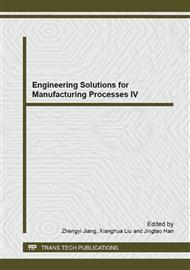p.817
p.821
p.825
p.829
p.833
p.838
p.845
p.850
p.856
Research and Design of Gardon Heat Flux Sensor
Abstract:
In the field of aerospace, the Gardon heat flux sensor is not allowed water-cooling device, so the sensor sensitivity would be greatly affected by the temperature rise of the heat sink. To deal with this problem, a high-temperature, high-precision heat flux sensor is designed based on the metal thermo-electric effect and the principle of thermal conduction. First of all, the measuring principle of the Gardon heat flux sensor is expounded. Then the heating process of the copper heat sink is derived. In order to slowdown the temperature of the heat sink, kinds of adiabatic measures are taken. Thermodynamic simulation for the designed sensor is performed by the ANSYS finite element simulation software. Finally, experiments have been carried out to test the performance of the sensor. The experimental results show that the sensitivity of the sensor with adiabatic measures did not decline within 1000s, and its linearity is 1.38%. So the sensor is able to meet applications in the aerospace field.
Info:
Periodical:
Pages:
833-837
Citation:
Online since:
February 2014
Authors:
Price:
Сopyright:
© 2014 Trans Tech Publications Ltd. All Rights Reserved
Share:
Citation:


